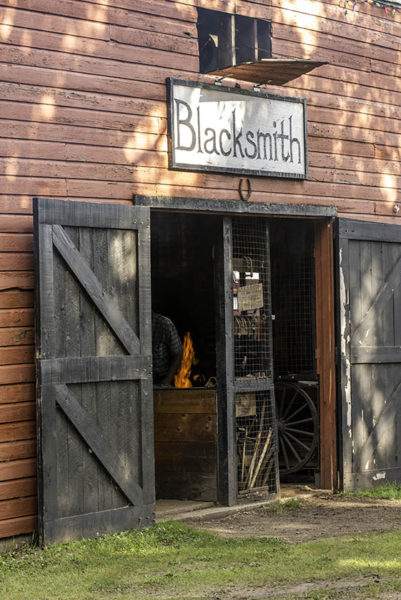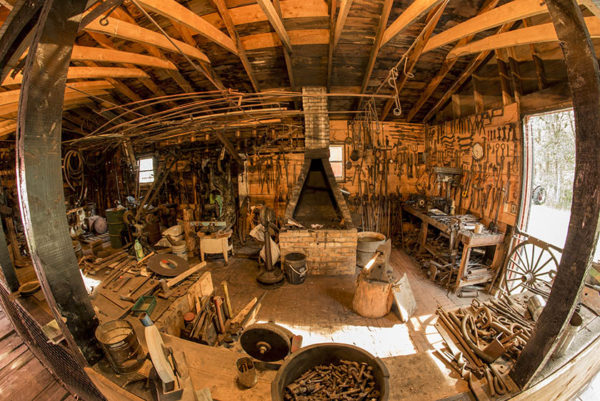
While this replica built in 1973, the Museum Blacksmith Shop is representative of the type that were a common feature of pioneer Manitoba communities. A blacksmith shop of the time was a very simple building, the chief function of which was to keep the tools and blacksmith out of the weather. Often the shop was built with very large doors, not only to let horses and machinery into the building for shoeing and repair but also to let the heat from the fire in the forge escape in the summer.
Any community of any size attracted a blacksmith. A blacksmith was necessary to pioneers as horses needed to be shoed. Horses not only provided the power for farming operations of the time but horses also moved people and goods around Pioneer Manitoba. A good blacksmith could correct a number of problems with the legs of horses by adjusting the shoes on the horse’s hooves. A poor blacksmith could cripple a horse. Blacksmiths also repaired farm machinery, tools and any other metal object that might need repair. Parts could be built as well. There are a number of operations that a blacksmith can carry out, forge welding, creating metal shapes, cutting holes, sharpening parts, tempering metal, building up metal parts and so on.
Blacksmiths often worked on the wooden wheels common to wagons and some farm machinery of the era. These wheels had a steel tire fastened around the face of the wheel and needed adjustment from time to time. For more complicated repairs, wooden wheels had to go to a wheel wright, a specialist in wooden wheel manufacture and repair.

A blacksmith in Pioneer Manitoba was sometimes called upon for services beyond metal working. A blacksmith was the only person who had the tools, like pliers, to pull teeth with. If one had a two or three day journey to a dentist, the blacksmith appeared to be a reasonable alternative. The blacksmith often served as veterinarian and so possessed tools for bleeding animals. A common idea at the time was that diseased blood should be removed for complete recovery. Sometimes human patients turned to the blacksmith for bleeding. Whether different tools were used in these cases is not known. Again a long journey to a medical doctor made the blacksmith appear as a reasonable alternative. Pioneering was not for the faint of heart.
Blacksmithing died out as horses were replaced by internal combustion engines and transportation and distribution systems developed making factory spare parts more accessible. As well, electric welding and metal working equipment became common on farms. However the art of blacksmithing has enjoyed revival in recent years. Many people have taken up the trade but more as an art as blacksmithing is capable of producing decorative metal work.
The Blacksmith shop is an interesting flashback to a pioneer trade but if you have the surname “Smith”, somewhere in your family history there is probably a blacksmith.


